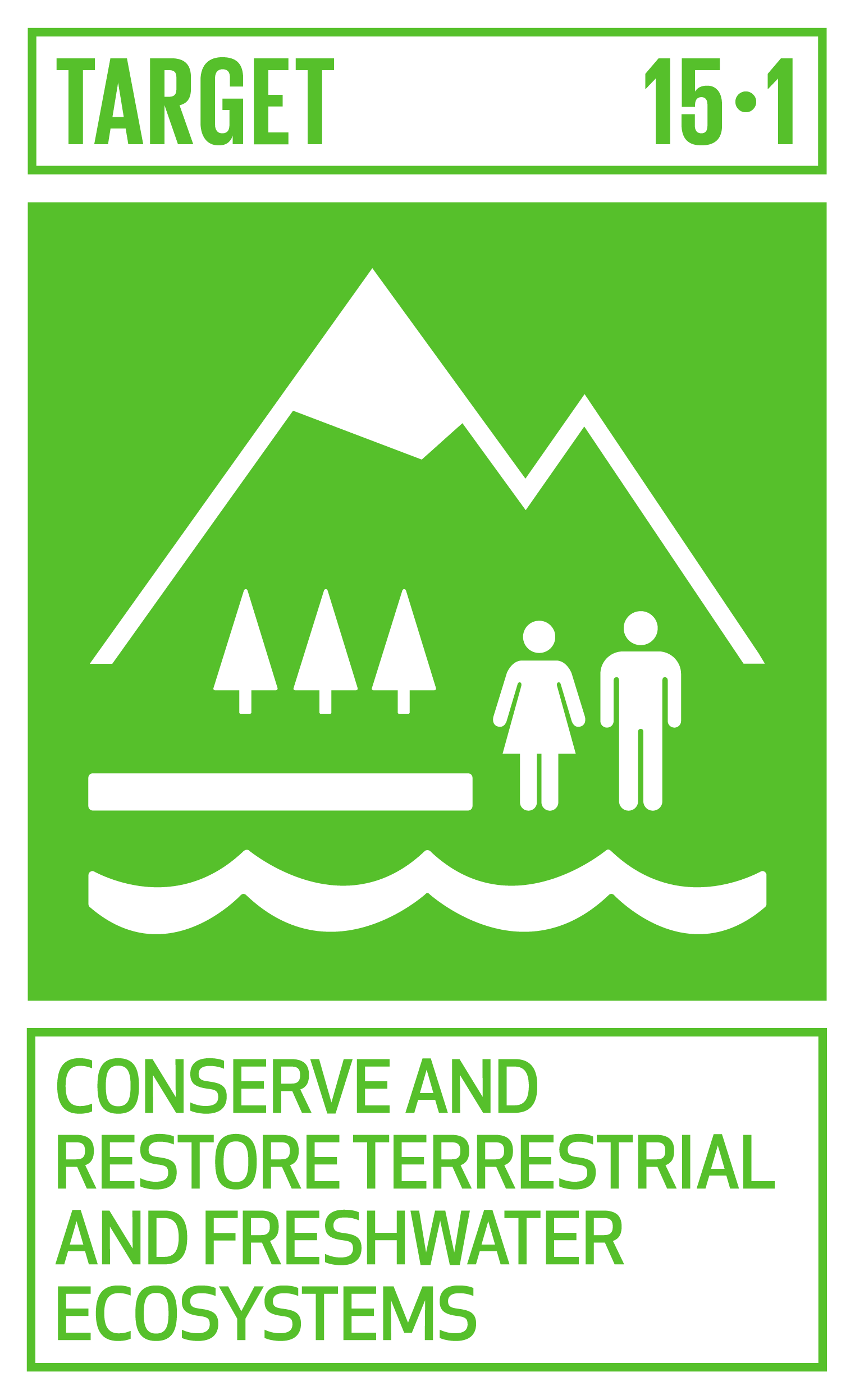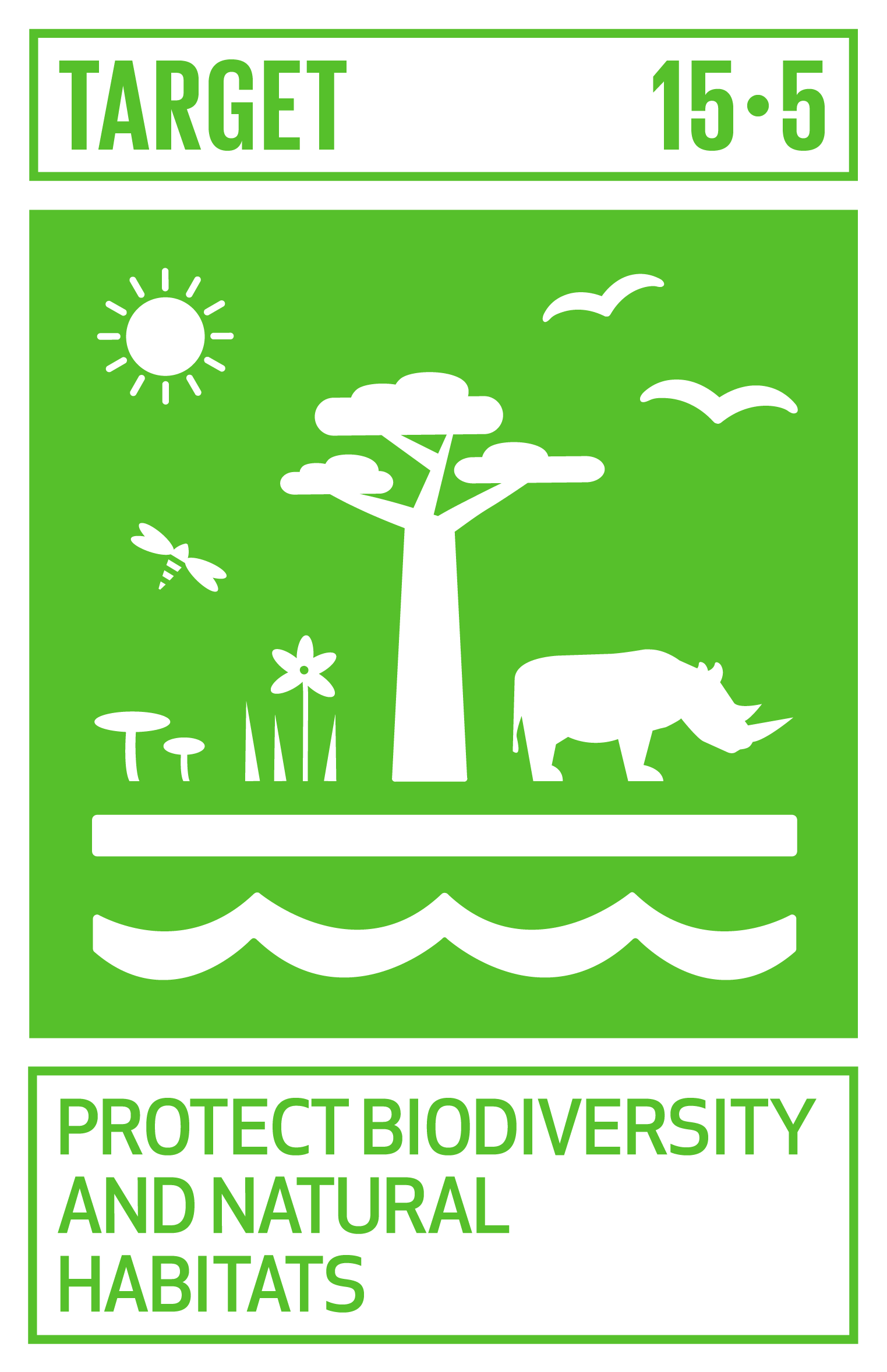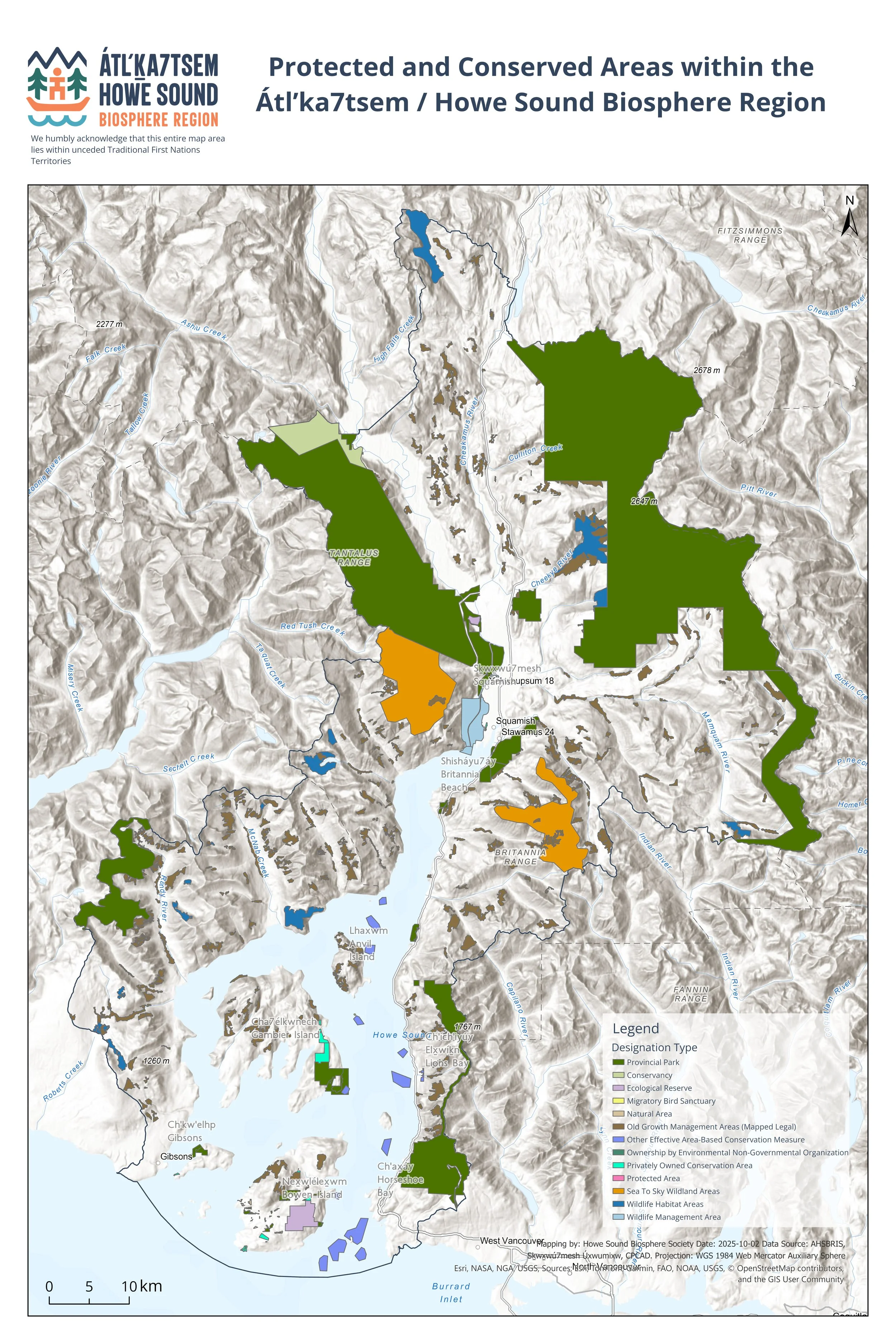Contributing to 30 X 30
The threats of climate change and biodiversity loss are no secret, as is evident by Canada’s commitment to protecting or conserving 30% of the country’s land and waters by 2030. To reach such bold targets requires innovative approaches. Such approaches must recognize barriers to protection and conservation and consider the social implications of ensuring biodiversity and ecosystem services are conserved.
Other effective area-based conservation measures (OECMs) play an important role in conserving biodiversity in addition to designated protected zones and parks. Environment and Climate Change Canada funding enables efforts to enhance the management of areas that are often at the interface between developed and protected areas. This project identifies and maps eligible areas meeting OECM criteria and helps increase local understanding of other effective conservation measures.
What are OECMs?
The term ‘Other effective area-based conservation measures’ first appeared at the 2010 Convention on Biological Diversity (Aichi Target 11) as an additional tool to meet global biodiversity conservation targets. OECMs provide long-term biodiversity conservation benefits for species, habitats and ecosystems and recognize efforts already contributing to conservation. It is believed that OECM designation will support conservation efforts, further encouraging land managers to maintain the systems they have put in place.
OECMs are defined as “a geographically defined area other than a Protected Area, which is governed and managed in ways that achieve positive and sustained long-term outcomes for the in-situ conservation of biodiversity, with associated ecosystem functions and services and, where applicable, cultural, spiritual, socioeconomic, and other locally relevant values” (UN Convention on Biological Diversity). This definition could also be applied to a designated protected area, however, the main difference is that the primary objective of a protected area is conservation. OECMs are managed for other primary purposes, but through management, biodiversity conservation is also achieved. Canada adopted this international OECM definition and voluntary guidance developed by the Convention on Biological Diversity in 2018.
Globally, OECMs offer an alternative in places where the expansion of protected areas may face backlash due to human rights concerns. OECMs can be governed by Indigenous peoples, local communities, local governments, industry, private organizations or individuals, among others. In addition, many activities such as recreation and low-impact resource extraction can still occur in these areas. “The OECM framework recognizes that conservation outcomes are possible outside protected areas, and the people involved in the governance of those natural resources should be valued, respected, and supported” leading to a new conservation model that increases inclusivity.
Lands registered in the Canadian Protected and Conserved Areas Database - July 2025
There are already OECMs in our region, including several Old-Growth Management Areas, Wildlife Habitat Areas, and Sea to Sky Wildland Zones. We seek to gain a better understanding of these areas, and identify other potential areas.
Private land owners with conservation covenants on their parcels can register their lands for OECM recognition. Contact us if interested.
Benefits
This project will support the national effort to protect or conserve 30% of the country’s land and waters by 2030. It will also support ongoing conservation efforts not currently recognized in the area. Since OECM identification and designation is still a relatively new concept, this project will involve the development of a protocol for Biosphere Region engagement with primary stakeholders, project partners and First Nations whose involvement is critical to realize the OECM recognition.
Project Updates October 2025
GIS analysis of existing OECMs occurred, including those within the biosphere region’s buffer zones. 56% of the buffer zones are currently designated as OECMs in the Canadian Protected and Conserved Areas Database (CPCAD).
Our team communicates with local governments to gain consent to assess lands for OECM recognition. We also collaborate with BC Nature on their Municipal Protected Areas Project. Through our analyses, we have revealed numerous eligible areas for OECM recognition. In 2024, BC Nature registered lands in Lions Bay, Bowen Island and Metro Vancouver into the database, bringing the total area registered in CPCAD to 33.23% (land) and 3.2% (marine). We anticipate this number to grow further with the current conservation initiatives underway by Fisheries and Oceans Canada, and many parcels of land within the District of Squamish, which we have submitted.
In June 2025, we hosted a webinar on conserving private lands in Howe Sound. We were joined by special guests Ben van Drimmelen, who was involved in the revision of the BC Conservation Covenant Handbook, and Owen Plowman, president of the Bowen Island Conservancy, who shared a local example of conserving lands for conservation on Bowen Island. Click here to watch the presentations from this webinar.
To learn more about this work, contact Samantha Wing oecmprojects@howesoundbri.org.
Deliverables & Resources
Conduct evaluation of suitable sites for OECM recognition through ground truthing
Develop engagement protocol for OECM recognition
Document eligible OECM sites for submission to CPCAD and final report
Resources & Other Materials:
Introduction to Other Effective Area-based Conservation Measures (OECMs)
Nationally Established Criteria and Guidance - Terrestrial
Nationally Established Criteria and Guidance - Marine
OECMs Common Questions and Answers
Benefits of OECMs and their recognition
Visit the Canada Conservation website for more information on OECMs, Protected Areas and Indigenous Protected and Conserved Areas in Canada
Canadian Protected and Conserved Areas Database (CPCAD) Interactive Map




